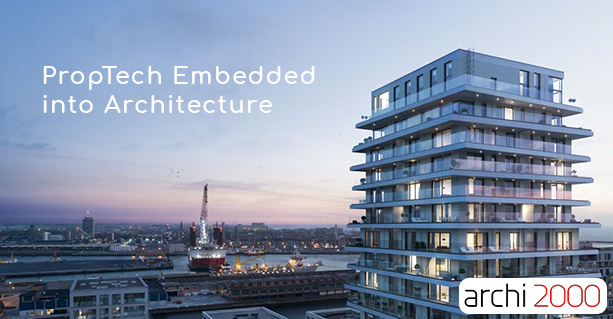interview with Jerome Verdussen from Archi2000
What is ARCHI2000 USP?
Our unique selling point is, in fact, our team. I believe that it is very important to focus and stress on the quality and the constantness of our team. We have been working together for years and have developed an expertise that is quite regular and integrated. Additionally, we are also working with partners like stability or special techniques offices that provide qualitative information, and we really try also to push our clients to choose these qualitypartners.
On the other hand, our architecture is not an architecture that you really notice between different buildings but we try to adapt our projects to their urban context. In other words, our goal is not to make an object that will stand out from other buildings, but to integrate that object in the city, in the surroundings, and to find a good balance between the new structures or the renovated buildings and the ancient ones.
In addition to that, we also believe that being open to new innovations and technologies would help us stand out in the market. For example, being part of PropTech Lab, as a firm, you can become more efficient and accurate. I think PropTech Lab can help us to identify little pain points or key points that are really important in our development, and then gaining these 3% or 5% in the efficiency spectrum is the kind of element you need to look for as a manager.
Why was it important for an architecture firm to join PropTech Lab?
We are now in a moment where we believe we need to recognize and understand the new innovations and technologies that are being introduced by the startups in our industry, as well as, we need to keep our eyes open in order to overcome many of the challenges and obstacles we are faced with throughout our industry. That is why ARCHI2000, decided to become part of the PropTech ecosystem and work together with other members in search of the latest digital-enabled trends.
What are these challenges and obstacles architecture firms are currently facing?
I believe we have two big challenges that we need to address. However, the first challenge can also be divided into three different criteria: the sustainability challenge, the material circulatory challenge, and the energy challenge. For instance, as architects, one of the challenges, we often face, is to be able to properly help in the decision whether we should demolish or renovate old structures. While that may be true, we can now welcome these challenges with new technologies such as material passports and ecological material databases to help reduce the carbon emissions that come out from construction and focus more on material and product circulation.
The second challenge is the technology challenge. In the 90s, architectural drawings assisted by informatics were becoming the norm. Whilst now, it is really the three-dimensional concepts and the BIM Collaboration between the different parties involved in a project that is really changing the standards of architecture. The difficulty, however, is really that having all the actors around the table, which are familiar with these innovations brings a lot of questions with it. On a more optimistic note, we now see more startups that are trying to solve some of these problems. So that’s interesting.
Why do you think they’re challenging?
Because these little hiccups are not individual difficulties but rather to have all the parties around the table accepting and willing to develop and adapt to the new procedures, as well as, working with them. For instance, the struggle of working with three-dimensional drawings or even switching to more efficient project management can be challenging to some firms or even specific departments in a firm.
In addition to that, as time goes by, you will notice that there is no immediate change, and things still take a lot of time to make some adjustments. For example, people that have been working as architects for 15 or 20 years, have to adapt to these new trends, and it’s not so easy. However, when it comes to the technologies that architects can use, for example, building information modeling (BIM), they no longer are “nice-to-have” but rather a necessity.
Has ARCHI2000 explored these new PropTech options?
Yes, of course, we have explored VR solutions for our office and once we were preparing a VR space for our clients to be immersed in the space, in their project, but our feeling was that the technology was not mature enough and that it suffered some constraints.
Finally, any geographical expansions for Archi2000?
Though our history is very localized in Brussels, we now develop ARCHI2000 as well to the South with a successful joint venture in Luxembourg as to the North with a freshly launched antenna at the Belgian Coast.

Project Manager

